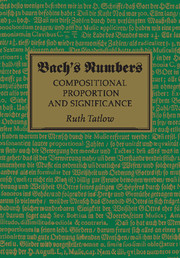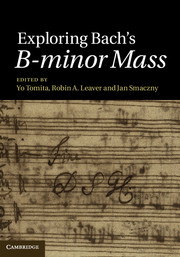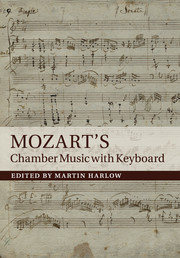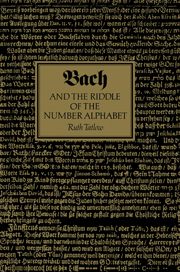Bach's Numbers
In eighteenth-century Germany the universal harmony of God's creation and the perfection of its proportions still held philosophical, moral and devotional significance. Reproducing proportions close to the unity (1:1) across compositions could render them beautiful, perfect and even eternal. Using the principles of her groundbreaking theory of proportional parallelism and the latest source study research, Ruth Tatlow reveals how Bach used the number of bars to create numerical perfection across his published collections, and explains why he did so. The first part of the book illustrates the wide-ranging application of belief in the unity, showing how planning a well-proportioned structure was a normal compositional procedure in Bach's time. In the second part Tatlow presents practical demonstrations of this in Bach's works, illustrating the layers of proportion that appear within a movement, a work, between two works in a collection, across a collection and between collections.
- Proposes a new theoretical basis for Bach's compositional method
- Part I provides comprehensive coverage of the evidence supporting every aspect of the theory of proportional parallelism
- Part II uses practical demonstrations to apply the new method to all of Bach's works
Reviews & endorsements
"For anyone who wishes to explore the logical pathways of Bach's genius, Tatlow's analysis gets to the heart of the aesthetic, theological and Pythagorean presuppositions underlying the Bachian concepts of 'Vollkommenheit', perfection through calculation; and 'Harmonie' … the harmony of proportion, here a mirror of divine order."
Gian Mario Benzing, translated from Corriere della Sera (La Lettura)
'For anyone who wishes to explore the logical pathways of Bach's genius, Tatlow's analysis gets to the heart of the aesthetic, theological and Pythagorean presuppositions underlying the Bachian concepts of 'Vollkommenheit', perfection through calculation; and 'Harmonie' … the harmony of proportion, here a mirror of divine order.' Gian Mario Benzing, translated from Corriere della Sera (La Lettura)
'… Tatlow’s approach to the subject matter is unique, and the vigorousness with which her methodology is applied has uncovered numerous new and unexpected facts. Bach scholarship cannot ignore her voice.' Yo Tomita, Music and Letters
… Bach’s Numbers clears the way for some promising new directions in Bach scholarship. Tatlow’s work should be valued not only for what it suggests for future study, however, but for what it provides in its own right: a bold historical rendering of Bach’s compositional process that forces us to view some of the composer’s greatest works in a new light, and with deepened appreciation.' Robert L. Wells, Music Analysis
Product details
October 2016Paperback
9781107459694
430 pages
244 × 169 × 23 mm
0.73kg
9 b/w illus. 119 tables
Available
Table of Contents
- Part I. Foundations:
- 1. Bach's numbers
- 2. Symmetry, proportion and parallels
- 3. Unity, proportions and universal harmony in Bach's world
- 4. Bars, compositional planning and proportional parallelism
- Part II. Demonstrations:
- 5. Three collections for strings
- 6. Four in two collections for keyboard
- 7. Two further collections for keyboard
- 8. Two small late collections
- 9. Two large late collections
- 10. Collections of concertos
- 11. Collections of organ works
- 12. Great passions and cantatas
- 13. Festive cut-and-paste projects: masses and oratorios
- 14. Lost blueprints
- Appendix 1. Chronological index of musical doctrine.






